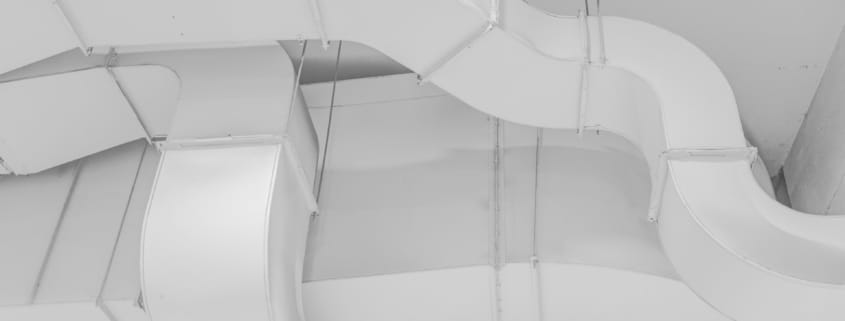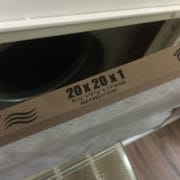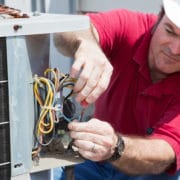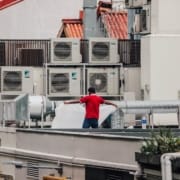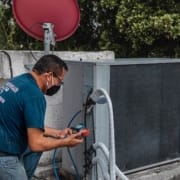What’s in Your Ductwork?
Keeping your HVAC ductwork clean and in good condition is essential to achieving high-quality air in your home. Lack of regular maintenance and HVAC servicing is the number one cause of pests and pathogens in system ducts. So, do you know what’s in your ductwork? You may be shocked to find what ductwork contaminants are in your system.
Here are Several Common Problems to Look Out For:
Signs Your HVAC Servicing is Overdue
If you can’t remember when HVAC servicing was last carried out, your home may be experiencing some unpleasant consequences. Nasty odors, and noises like rattling, squeaking, and squealing that seem to be coming from the HVAC are clear signs that equipment inspection should be done pronto. Additionally, you may notice a smell of dust in the air, or sudden mustiness, or family members may be experiencing intense allergy symptoms.
Large, Furry, or Feathery Intruders
Old houses are prone to wear and tear, creating openings in external and internal walls. These small gaps entice and enable many types of rodents to work their way inside and make their homes inside wall cavities and ductwork. Let’s talk about mice and rats, for starters.
If your HVAC vents through a chimney, there’s also the potential for storm damage to the chimney cap and more furry and feathered friends to install themselves through openings from the roof. Furthermore, as an HVAC system ages, normal wear and tear will also contribute to gaps and weaknesses in the ductwork providing entryways for small critters.
Small and Creepy Invaders
If rodents and birds can make a nuisance of themselves in chimney structures and ductwork, then it’s even easier for tiny and not-so-tiny, creeping, crawling, and scuttling nuisances to come inside. Insects and arachnids that frequent HVAC ducts include dust mites, spiders, cockroaches, and silverfish.
Your unwelcome lodgers can breed quickly in the cavities, sheltered nooks, and crannies of ducts. A small problem can soon become an explosion in numbers and a significant headache to get rid of. Fortunately, many HVAC companies perform basic pest control as part of their servicing and will readily capture and dispose of small critters.
Hidden but Toxic Ductwork Contaminants
It’s usually fairly obvious when rodents or birds make themselves at home where they’re not wanted. Still, the less obvious ductwork contaminants can be highly detrimental to the air quality in your home or workplace. Organic pollutants include fungal and mold spores, pollen particles, and harmful bacteria and virus spores. These airborne particles can easily make their way into the ducts from the outdoors.
Your first sign that these microscopic particles may be lodged in your HVAC ducts is when you or yours develop respiratory symptoms. Excessive sneezing, coughing, a tendency to develop sinus problems, colds, and flu can all be signs that pollutants are present in heavy concentrations in the air. Over time too much exposure to these pollutants can weaken the immune system in susceptible people and cause constant respiratory problems. Reducing such health risks requires that air filters be regularly changed and upgraded to HEPA filtration levels if necessary.
How Regular HVAC Servicing Prevents and Removes Problems
Professional, qualified HVAC technicians follow strict processes when servicing your HVAC. They inspect, lubricate, and adjust moving parts, including motors, belts, controls, and valves. Air measurements are performed to ensure there are no blockages or leaks and that blower mechanisms are working correctly. Thermostat controls are checked along with electrical connections.
The ductwork is inspected to identify and repair any gaps that have allowed entry by animals or biological pollutants. Air filters are inspected and replaced.
Removing Pests and Pollutants
If large rodents such as squirrels, snakes, or raccoons have invaded, a professional pest control company may have to be called in before HVAC cleaning begins. Insects can be blown out of the system as the ducts are cleaned and vacuumed. Industrial-strength vacuums can also remove small dead creatures such as mice and spiders.
Severe contamination levels may require pesticides, antiseptics, or disinfectants to be applied. The Environmental Protection Agency lists registered and recommended products that can be used for cleaning purposes.
Tackle Ductwork Problems with Your Local HVAC Experts
Briggs HVAC is your local Northern Virginia for all HVAC maintenance and servicing. Our technicians give superior service, expertly inspecting, cleaning, and remediating your HVAC equipment. With a regular maintenance plan, you get a twice-yearly service and head off a host of potential problems. Servicing includes ensuring your equipment is properly sealed to prevent animals and other ductwork contaminants. Contact us today for more details.

